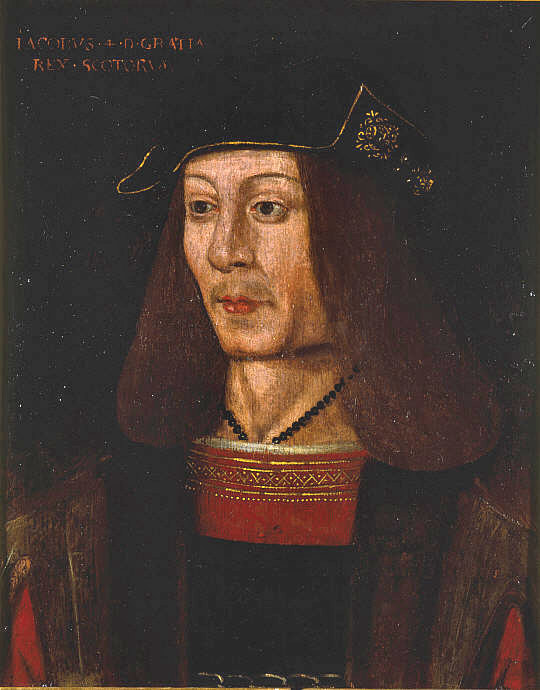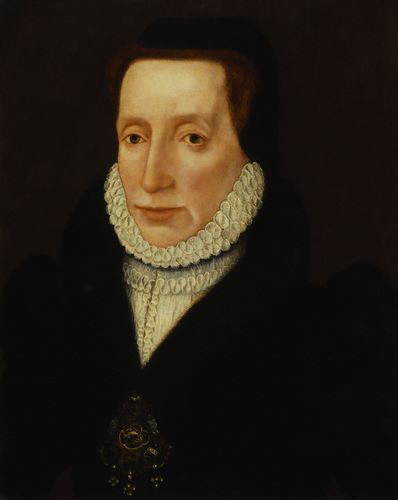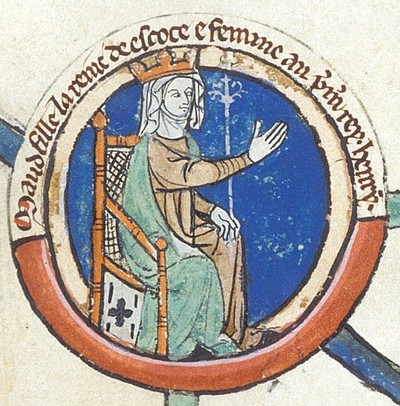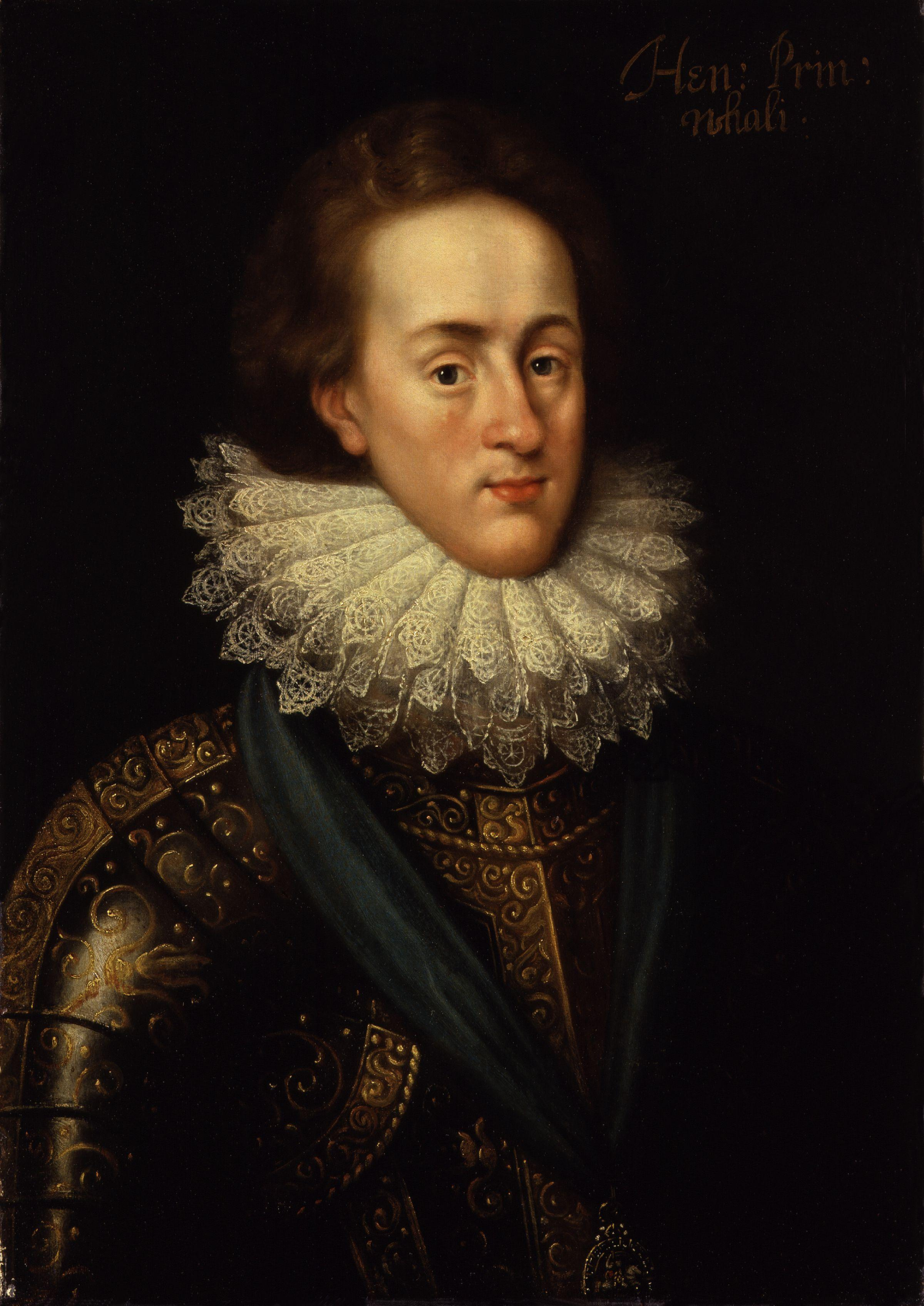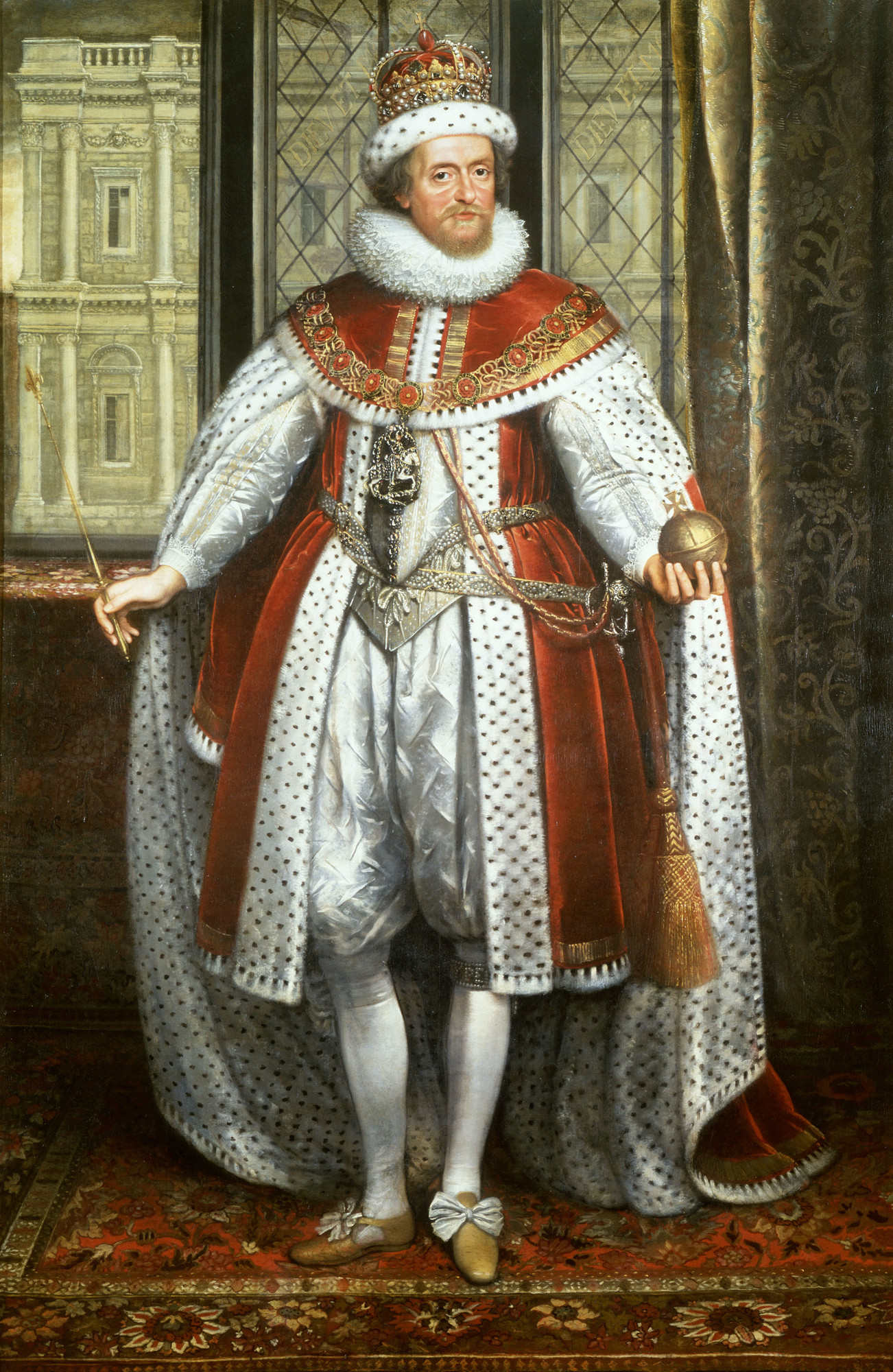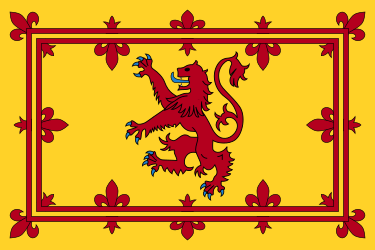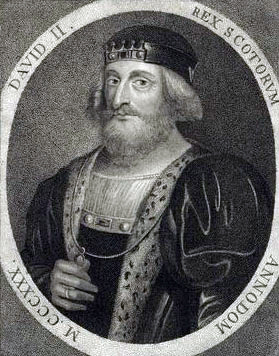by Susan Flantzer
© Unofficial Royalty 2016

James V, King of Scots, circa 1536; Credit – Wikipedia
James V, King of Scots was born at Linlithgow Palace in Linlithgowshire, Scotland, on April 10, 1512. He was the third of the four sons of James IV, King of Scots and Margaret Tudor, eldest daughter of King Henry VII of England and Elizabeth of York, daughter of King Edward IV of England. At his birth, James became Duke of Rothesay and Steward of Scotland, traditional titles of the eldest son of the King of Scots, as his two elder brothers, James and Arthur, had died in infancy. James had one younger brother who also died in infancy and two stillborn sisters.
- James, Duke of Rothesay (1507 – 1508)
- Stillborn daughter (1508)
- Arthur, Duke of Rothesay (1509 – 1510)
- Stillborn daughter (1512)
- Alexander, Duke of Ross (1514 – 1515)

James IV, King of Scots and Margaret Tudor; Credit – Wikipedia
In 1509, James’ maternal grandfather, King Henry VII of England, died and was succeeded by James’ uncle, King Henry VIII. Despite the great hopes of peace between England and Scotland as symbolized by the marriage of Margaret Tudor and James IV, King of Scots, Henry VIII did not have his father’s diplomatic patience and was heading toward a war with France. James IV was committed to his alliance with France and invaded England. Henry VIII was away on campaign in France and Flanders in 1513, and he had made his wife, Catherine of Aragon, regent in his absence. It was up to Catherine to supervise England’s defense when Scotland invaded. Ultimately, the Scots were defeated at the Battle of Flodden near Branxton, Northumberland, England on September 9, 1513, and 30-year-old James IV was killed in the battle, and 17-month-old James succeeded his father as James V, King of Scots.
James V was crowned on September 21, 1513, at Stirling Castle. Under the terms of James IV’s will, Margaret was the regent for her son as long as she did not remarry. While the Scottish Parliament confirmed Margaret as regent, many were unhappy with an English female regent and sought to replace Margaret with John Stewart, 2nd Duke of Albany, grandson of King James II of Scotland, the closest male relative to the infant king, and the heir presumptive to the throne. Margaret sought an ally with the pro-English House of Douglas. On August 6, 1514, Margaret secretly married Archibald Douglas, 6th Earl of Angus. The marriage stirred up the nobles’ jealousy and the opposition of the faction supporting French influence in Scotland. Civil war broke out, and Margaret lost the regency to John Stewart, 2nd Duke of Albany. Margaret fled to England, where she lived until 1517, when she returned to Scotland.
James V was educated by leading scholars and ranked among the best-educated rulers of that time. His tutors included Gavin Dunbar, Dean of Moray, later Archbishop of Glasgow; the poet John Bellenden; the poet Sir David Lyndsay, Lyon King of Arms; and James Inglis, Abbot of Culross.
In the autumn of 1524, James V dismissed his regents and was proclaimed an adult ruler by his mother. However, James V remained under the control of his stepfather, Archibald Douglas, 6th Earl of Angus, Margaret Tudor’s second husband. In 1528, James finally escaped Angus’s control and assumed control of the government. James V then spent some time limiting the role of Scottish nobles.

Madeleine of Valois; Credit – Wikipedia
The 1517 Treaty of Rouen, signed after the Battle of Flodden, stated that King James V of Scotland was to marry a French princess. When King James V reached a marriageable age, talks began regarding marriage with Madeleine of Valois, daughter of King François I of France and Claude, Duchess of Brittany. However, Madeleine’s ill health was an issue, and another French bride, Mary of Bourbon, was offered as a substitute. When James V went to France to meet Mary of Bourbon, he also met Madeleine, and decided to marry her. Because of his daughter’s health issues, François I was reluctant to agree to the marriage, but eventually, he did so. Madeleine and King James V of Scotland were married on January 1, 1537, at Notre Dame Cathedral in Paris. After months of celebrations in France, the couple arrived in Scotland on May 19, 1537, but Madeleine’s health had further deteriorated. Madeleine wrote a letter to her father on June 8, 1537, saying that she was feeling better and that her symptoms had subsided. Despite this, on July 7, 1537, Madeleine died in her husband’s arms, a month short of her seventeenth birthday.

James V and Marie of Guise; Credit – Wikipedia
On May 18, 1538, at Notre Dame Cathedral in Paris, less than a year after the death of his first wife, James V married again. The marriage was a proxy marriage with Robert Maxwell, 4th Lord Maxwell, standing in for the groom. James V’s second bride was Marie of Guise, the eldest daughter of Claude of Lorraine, Duke of Guise, head of the House of Guise, and his wife Antoinette de Bourbon. Marie had been married to Louis II d’Orléans, Duke of Longueville, for three years before he died. Marie had one surviving son, three-year-old François, whom she was forced to leave in France as he had succeeded his father as Duke of Longueville. James V and Marie married in person at St. Andrews, Scotland, on June 12, 1538.
James V and Marie had two sons and one daughter, but their sons died in infancy:
- James, Duke of Rothesay (1540 – 1541)
- Arthur, Duke of Albany (born and died April 1541)
- Mary, Queen of Scots (1542 – 1587), married (1) King François II of France, no issue; (2) Henry Stuart, Lord Darnley, had one son King James VI of Scotland/James I of England; (3) James Hepburn, 4th Earl of Bothwell, no issue
James V had at least nine illegitimate children:
- James Stewart, Commendator of Kelso and Melrose (circa 1529 – 1557), son of Elizabeth Shaw
- John Stewart, Lord Darnley (circa 1531 – 1563), son of Elizabeth Carmichael
- James Stewart, 1st Earl of Moray (circa 1531 – 1570), son of Margaret Erskine, James V’s favorite mistress, advisor to his half-sister, Mary, Queen of Scots, and regent for his nephew, James VI, King of Scots
- James Stewart (born and died circa 1532) died in infancy, son of Christine Barclay
- Robert Stewart, 1st Earl of Orkney (1533 – 1593) son of Euphame Elphinstone
- Adam Stewart, Prior of Perth Charterhouse (circa 1535 – 1575), son of Lady Elizabeth Stewart
- Jean Stewart (died 1588), daughter of Elizabeth Bethune
- Robert Stewart, Prior of Whithorn (died 1581), mother unknown
- Margaret Stewart, mother unknown
When his mother Margaret Tudor died in 1541, James V saw no reason to keep the peace with England. When war broke out between England and France in 1542, it was inevitable that Scotland would go to war against England because of their treaty with France. When Henry VIII of England broke from the Roman Catholic Church, he asked his nephew James V, King of Scots to do the same. James ignored his uncle’s request and insulted him further by refusing to meet with Henry VIII in York. Furious, Henry VIII sent troops against Scotland. In retaliation for the English raid into Scotland, James responded by assigning Robert, Lord Maxwell, the Scottish Warden of West March, the task of raising an army. On November 24, 1542, the Battle of Solway Moss in Cumberland, England, resulted in a decisive English victory.
After the Battle of Solway Moss, James V fled to Falkland Palace, where he became ill and took to his bed. Overcome with grief and shame about the Battle of Solway Moss, James V lost the will to live. The news that Marie of Guise had given birth to a daughter on December 8, 1542, did nothing to raise his spirits. James V, King of Scots died at Falkland Palace in Fife, Scotland, on December 14, 1542, at the age of 30. He was buried at Holyrood Abbey in Edinburgh, Scotland, alongside his first wife Madeleine and his two sons by Marie of Guise. James’ tomb was desecrated in 1544 during the War of the Rough Wooing, and his remains were reburied in the Royal Vault at Holyrood Abbey during the reign of Queen Victoria. James V was succeeded by his only surviving, legitimate child, six-day-old Mary, Queen of Scots.
This article is the intellectual property of Unofficial Royalty and is NOT TO BE COPIED, EDITED, OR POSTED IN ANY FORM ON ANOTHER WEBSITE under any circumstances. It is permissible to use a link that directs to Unofficial Royalty.
Works Cited
“Battle of Solway Moss.” Wikipedia. N.p.: Wikimedia Foundation, 28 July 2016. Web. 23 Oct. 2016.
“James V of Scotland.” Wikipedia. N.p.: Wikimedia Foundation, 8 Oct. 2016. Web. 23 Oct. 2016.
Susan Flantzer. “Margaret Tudor. Queen of Scots.” English Royals. Unofficial Royalty, 29 Nov. 2016. Web.
“Mary of Guise.” Wikipedia. N.p.: Wikimedia Foundation, 3 Oct. 2016. Web. 23 Oct. 2016.
Susan Flantzer. “Madeleine of Valois, Queen of Scots.” Scottish Royals. Unofficial Royalty, 6 July 2013. Web. 23 Oct. 2016.
Williamson, David. Brewer’s British Royalty. London: Cassell, 1996. Print.





